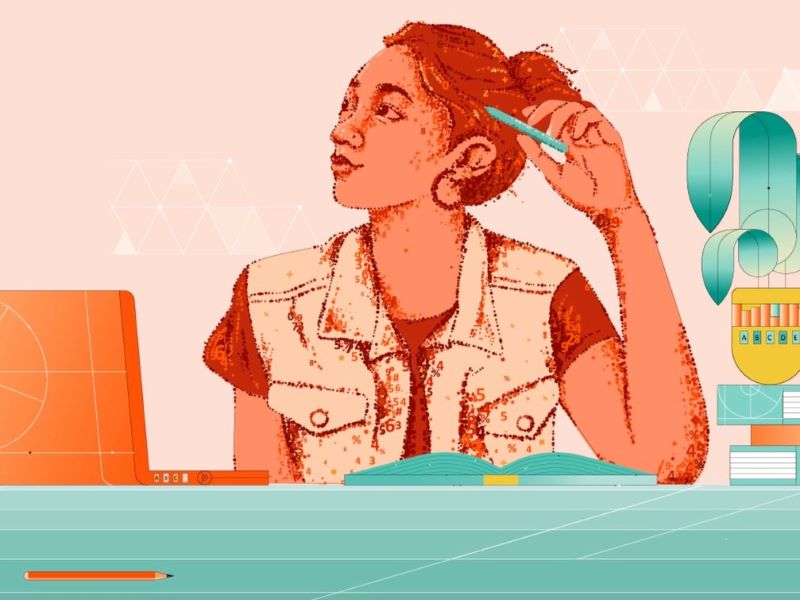The 2021 Census has been hailed as a giant leap for digital accessibility in Australia, following years of design work and testing by experts and advocates, who say the online form sets a new standard for government content and has improved data quality.
The five-year national survey was delivered on Tuesday and offered in various ways including Braille, large print formats, audio, Australian Sign Language videos with closed captions and easy-to-read guides.
The Census website meets global digital accessibility standards and worked across multiple devices, operating systems, and browsers with various assistive technologies.
The accessibility options are the result of a years of accessibility work by the Australian Bureau of Statistics (ABS) with partners and advocates, and decades of campaigning by the disability community.

The 2021 Census was the fifth Gisele Mesnage has completed online. The first – an online pilot in 2001 – was not accessible for screen readers, the assistive technology Ms Mesnage and others in the blind and low vision community rely on to read digital content.
Ms Mesnage, who would go on to found the Digital Gap Initiative, filed a complaint under Australia’s Disability Discrimination Act. Despite the ABS’ argument at the time that accessibility risked security, the complaint was resolved in her favour, and triggered nearly two decades of improvements to the national survey.
“The 2021 Census form was the most accessible online Census form I have completed in the past 20 years,” Ms Mesnage told InnovationAus.
“Even the Census codes needed to complete the online form were provided in a variety of formats, including Braille, large print and SMS text.
“I completed my online form a few days prior to the official August 10 Census night. It was super easy, fast and barrier-free.”
Expression Australia community engagement manager Olivia Beasley said the 2021 Census was an overall fantastic experience for her, because of the 66 Australian Sign Language (Auslan) videos accompanying the online form, including one for each question.
“As a deaf person, English is my second language and having the online videos on the Census was a huge help enable me to answer the questions appropriately. I felt comfortable and was more willing to answer the questions so it was overall a really good experience,” she said.
Previous Censuses have been stressful for deaf people, Ms Beasley said, recalling her household, which is almost all deaf, often needing more than an hour to complete previous versions.
“I do remember [the Census] always being a stressful experience trying to work out what the questions are and whether we’ve got the right answer. So, this experience, for me completing it, was really different. It was actually quite quick to complete.”
Expression Australia is one of the peak bodies for the deaf and hard of hearing community which, along with others like Deaf Australia and Australian Deaf Elders, worked with the ABS to make the Census the most accessible yet. The advocates provided advice on Auslan translation and videos, support services and the layout of information.
There is still room for improvement, Ms Beasley told InnovationaAus, like the inclusion of Auslan as an option in language questions. Currently it must be typed or written in under other.
But she is confident the 2021 has set a new standard for government content in Australia, and an example for organisations everywhere.
“All of that advocacy work, you know, really showed the government that they needed to step up the accessibility and make sure that their website and everything was as accessible as possible. We were really excited to see that happen this year.”
Digital Gap Initiative founder and coordinator Ms Mesnage said the ABS had shown it takes accessibility seriously and demonstrated the benefits of having user testers with lived experience of disability.
“To me, completing a Census form is somewhat similar to voting,” she said.
“It’s sort of a civic responsibility and also an experience you share with millions of other Australians. So, there is a sense of sheer satisfaction in being able to complete these tasks independently like other people.”
Intopia Digital co-founder and managing director Stewart Hay said the 2021 Census is a good example of a government putting citizens first and making sure as many people as possible are included in an important service.
Mr Hay, whose digital accessibility consultancy worked with the ABS for the last year on the 2021 Census, said the latest version was a marked improvement on 2016.
“Nothing is necessarily always perfect, but the ABS definitely prioritised accessibility and went early to try to ensure that they rectify those concerns in the community that came up with the previous census,” he told InnovationAus.
“The proof is in the pudding in the sense that the feedback from that community has been overwhelmingly positive and to date. I haven’t come across any negative criticism, with regard to people’s ability to access the census.”
Do you know more? Contact James Riley via Email.

